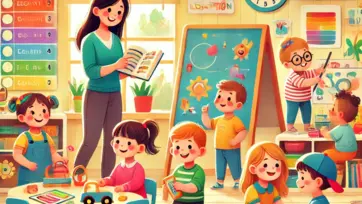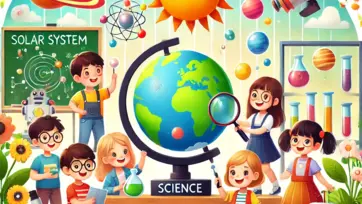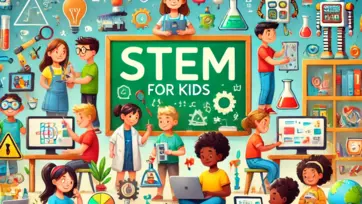Learning to spell and use grammar correctly is essential for young learners as it forms the foundation of effective communication. Strong spelling and grammar skills help children express themselves clearly, improve their writing, and boost their confidence in both academic and everyday settings. In this article, we will explore effective spelling and grammar tips that parents and teachers can use to support young learners on their educational journey.
Why Spelling and Grammar Matter
Spelling and grammar are fundamental aspects of literacy that impact reading comprehension and writing clarity. Poor spelling can make it difficult for children to read their own writing, while incorrect grammar can lead to misunderstandings. Developing these skills early ensures that children can confidently communicate and succeed in school and beyond.
1. Make Learning Spelling Fun with Games
Children learn best when they are engaged in fun activities. Incorporating games into spelling lessons can make learning enjoyable and effective. Here are some interactive spelling games:
- Scrabble or Bananagrams: Helps kids practice spelling new words.
- Spelling Bee: Encourages kids to learn and recall words quickly.
- Word Puzzles & Crossword Games: Improves vocabulary and spelling.
- Hangman: Teaches spelling in a fun, interactive way.
Online apps like SpellingCity and ABCmouse also provide engaging spelling activities tailored for different age groups.
2. Use Phonics for Better Spelling
Phonics is an effective method for teaching spelling. It involves breaking words into sounds and syllables, helping children recognize patterns and spell unfamiliar words.
Tips for teaching phonics:
- Encourage kids to sound out words instead of memorizing them.
- Use flashcards with pictures to associate words with their sounds.
- Read aloud regularly and point out letter-sound relationships.
3. Encourage Daily Reading
Reading regularly helps children see correct spelling and grammar in action. The more they read, the more familiar they become with word structures and sentence formation.
Ways to encourage reading:
- Choose books that match their reading level and interests.
- Read stories together and discuss new words.
- Use audiobooks with printed books to reinforce spelling and pronunciation.
4. Create a Word Wall
A word wall is a great tool to help children learn new words and their spellings. It involves placing commonly used words on a wall in a visible place, such as a classroom or study area.
How to use a word wall effectively:
- Organize words alphabetically or by categories (e.g., animals, colors, action words).
- Add new words weekly to expand vocabulary.
- Encourage kids to use the word wall when writing sentences.
5. Use Mnemonics and Memory Tricks
Mnemonics are fun memory aids that help children remember tricky spellings.
Examples:
- "I before E except after C" (believe, receive).
- "Big Elephants Can Always Understand Small Elephants" (to remember how to spell “because”).
- "There is a rat in separate" (to avoid spelling it as ‘seperate’).
Using rhymes, songs, and acronyms can make difficult spellings easier to recall.
6. Practice Writing Daily
Writing regularly helps reinforce spelling and grammar. Encourage kids to write stories, diary entries, or letters to family members.
Ways to encourage writing:
- Give them fun writing prompts.
- Let them write about their day.
- Ask them to describe a picture in words.
- Have them write short emails or thank-you notes.
7. Teach Common Spelling Rules
While English has many exceptions, some general spelling rules help children spell correctly:
- Adding -ing: Drop the ‘e’ before adding -ing (make → making).
- Plural rules: Add ‘s’ for most words (cat → cats), but ‘es’ for words ending in s, x, ch, sh (box → boxes).
- Doubling consonants: Double consonants for short vowel words before adding endings (run → running).
8. Correct Mistakes Gently
Children make mistakes as they learn, and correcting them in a supportive way builds confidence. Instead of simply pointing out mistakes, encourage them to find and fix errors themselves.
Tips for gentle correction:
- Ask: "Does that look right? Try sounding it out."
- Encourage self-correction by having them read their work aloud.
- Praise their efforts and highlight improvements.
9. Improve Grammar with Interactive Exercises
Grammar rules can be tricky, but interactive activities help children grasp them more effectively.
Fun grammar activities:
- Grammar Bingo: Helps kids identify parts of speech.
- Sentence building games: Use word cards to form correct sentences.
- Fill-in-the-blank stories: Teaches proper verb tenses and sentence structure.
- Acting out sentences: Helps children understand subject-verb agreement.
10. Encourage Speaking and Listening Skills
Good grammar starts with good speaking skills. Encourage kids to speak in complete sentences and listen carefully to correct grammar use in conversations.
Activities to develop speaking and listening skills:
- Play storytelling games where they narrate short tales.
- Encourage them to ask and answer questions in full sentences.
- Listen to children’s podcasts and discuss the grammar used.
11. Make Use of Technology
Educational apps and websites provide an engaging way for kids to practice spelling and grammar. Some useful resources include:
- Grammarly for Kids (grammar correction assistance)
- FunBrain (spelling and vocabulary games)
- Duolingo ABC (helps with early reading and spelling)
- BBC Bitesize (grammar and punctuation lessons)
Conclusion
Helping young learners improve their spelling and grammar skills doesn’t have to be challenging. By making learning fun, encouraging daily practice, and using engaging activities, children can develop strong literacy skills. Whether it’s through games, phonics, reading, writing, or interactive exercises, the key is consistency and encouragement. With these tips, parents and teachers can ensure that young learners gain confidence and proficiency in spelling and grammar, setting them up for future success in communication and academics.








